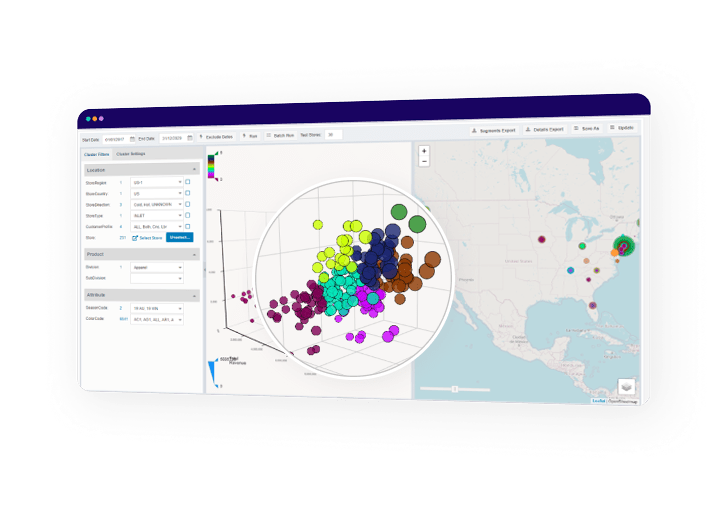In the quest for a good night’s sleep, many turn to remedies ranging from herbal teas to meditation. Recently, my remedy of choice has been a tart cherry juice “mocktail.” This sleep-enhancing hack has gained recent popularity thanks to health and wellness accounts on social media, which have shed light on its melatonin-boosting and anti-inflammatory properties.
Trying it out, I was pleasantly surprised to discover a significant increase in REM sleep hours. However, the juice for my newfound nightly routine soon became difficult to find, perpetually out of stock each time I tried to purchase it at the grocery store.
The surge in tart cherry juice’s popularity isn’t only from personal experience. Recent statistics have revealed a surge in sales across the United States, indicating a growing trend that has caught the attention of both consumers and retailers alike. With tart cherry juice sales transitioning into a steady demand pattern, retailers must adapt their inventory strategies accordingly to meet this evolving consumer preference.
The tart cherry juice mocktail represents just one of the many trends started by social media accounts on platforms like TikTok and Instagram. It serves as a compelling example of how retailers must reassess their inventory strategies to adapt to rapidly shifting market demands driven by trends. In this blog, I will explore the use of AI/ML inventory planning for fresh products to optimize sales while minimizing waste and stockouts.
Daily Automated Segmentation
Enter the realm of automated segmentation, a solution that streamlines inventory management by taking demand variability into account daily.
Traditional methods relying on static minimum and maximum safety stock levels may be sufficient during business-as-usual. However, they can quickly become tedious and error-prone when manually adjusted to account for fluctuations in demand caused by factors such as seasonality, promotions, social media activities, and product lifecycle effects.
Automated product segmentation, powered by machine learning (ML) and artificial intelligence (AI) algorithms, dynamically assigns target service levels and safety stocks for each product at the store level. This approach goes beyond traditional ABC segmentation, considering variability in both supply and demand and continuously adjusting product segmentation. Planners have the flexibility to establish the target service levels for individual products or categories, while AI handles the remaining details (safety stock levels, reorder points, order quantities, etc.).

For instance, if category managers want to aim for 100% availability of tart cherry juice, they can set the target service level accordingly and allow AI to optimize inventory levels. This enables planners to quickly assess the impact of different inventory management strategies while AI helps them adapt to the variable demand in the ever-changing landscape of consumer trends.
Waste vs. Availability Simulation
With its limited shelf life, Tart cherry juice embodies the delicate balance between waste and availability, presenting retailers with a challenge: order more and risk expiration, or order less and risk stockouts. The trade-off between waste and lost sales is a critical consideration in inventory management and replenishment for perishable products. Companies must carefully consider expiration dates when replenishing inventory, aiming for precision in the quantity and timing of their orders.
Waste management includes storage costs, depreciation of perishable goods, and disposal expenses. Meanwhile, lost sales mean immediate revenue loss and potential damage to customer relationships and brand reputation due to product unavailability. Retailers must find the right balance to optimize inventory levels while minimizing waste and lost sales.

If planners aim to achieve a 100% availability target service level for tart cherry juice, they can increase safety stock levels to ensure the product is always available to customers. However, this approach is likely to result in excess inventory and waste. To strike a balance, AI can assist companies in conducting a cost simulation, comparing the expense of holding excess inventory (resulting in waste) with the cost of failing to meet customer demand (leading to lost sales). This analysis identifies the inventory level where profitability is maximized by keeping customers happy while minimizing excess stock. The simulation can provide various replenishment values to offer an optimized quantity for each product at each location.
Based on the company’s strategy, they can prioritize factors such as availability for customers, minimizing waste, or following system-generated recommendations for the lowest total cost to serve. Using AI/ML Inventory solutions, retailers and distributors can automatically prioritize trending fresh products such as tart cherry juice.
The tart cherry juice sleep trend is a testament to AI’s transformative potential in inventory planning. As demand for niche and trending products rises, retailers must embrace innovative solutions to stay ahead of the curve.
With planning tools leveraging optimization technology to address the trade-offs for short shelf-life products, the promise of a good night’s sleep extends beyond personal wellness—it becomes a reality for inventory planners everywhere.
Tackle Fresh Retail Challenges with Solvoyo
As a retailer; the rapidly changing market can pose a significant challenge to your supply chain planning.
Solvoyo’s advanced analytics and machine learning capabilities have enabled fresh grocery retailers to sense demand changes, optimize inventory levels, minimize total cost to serve, and collaborate with external partners.
With Solvoyo’s autonomous planning capabilities, you can manage your supply chains more effectively in light of uncertainty, avoid stock-outs, lower costs, and keep your customers happy while supporting a more sustainable business model.
Learn more about Solvoyo Digital Platform.










